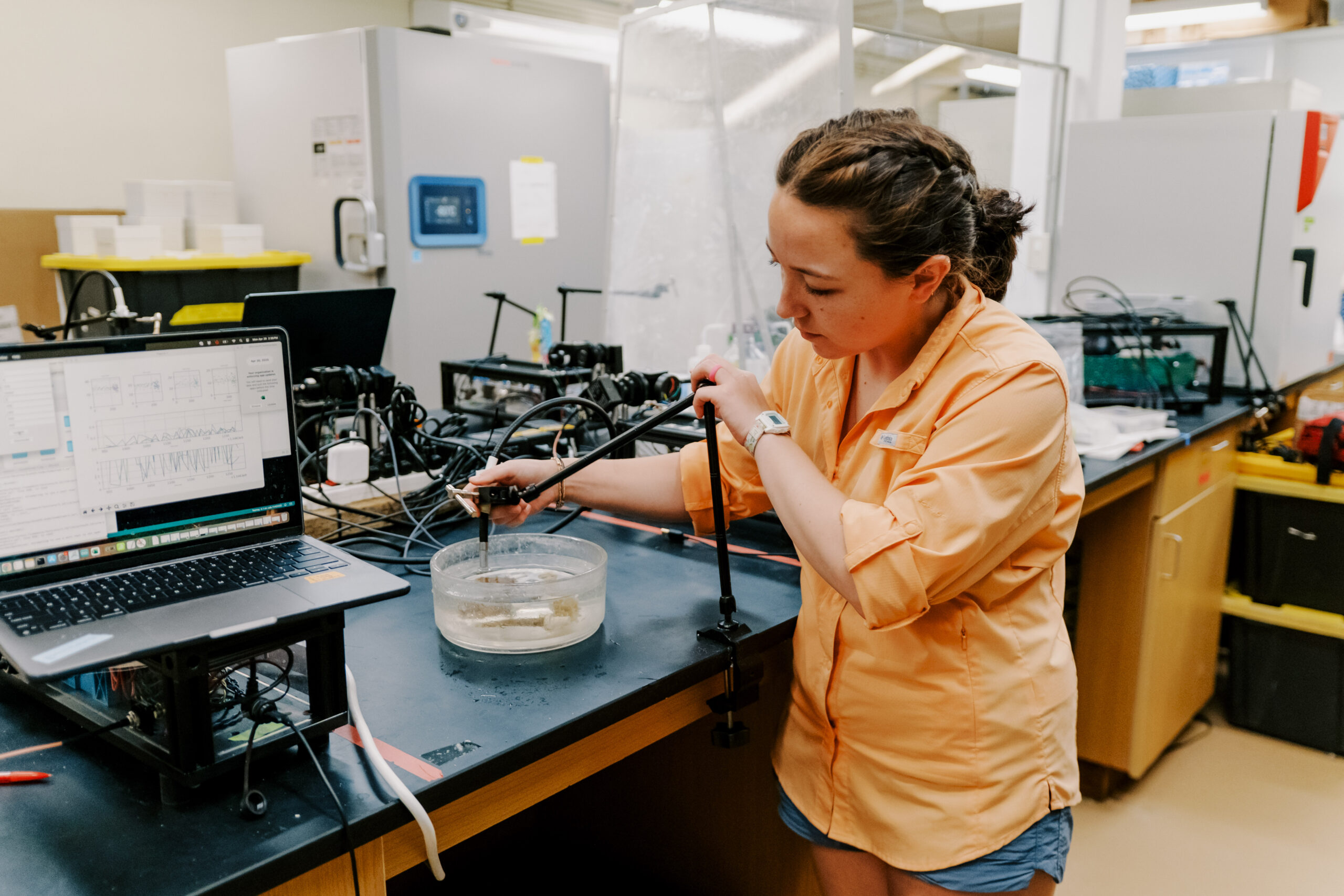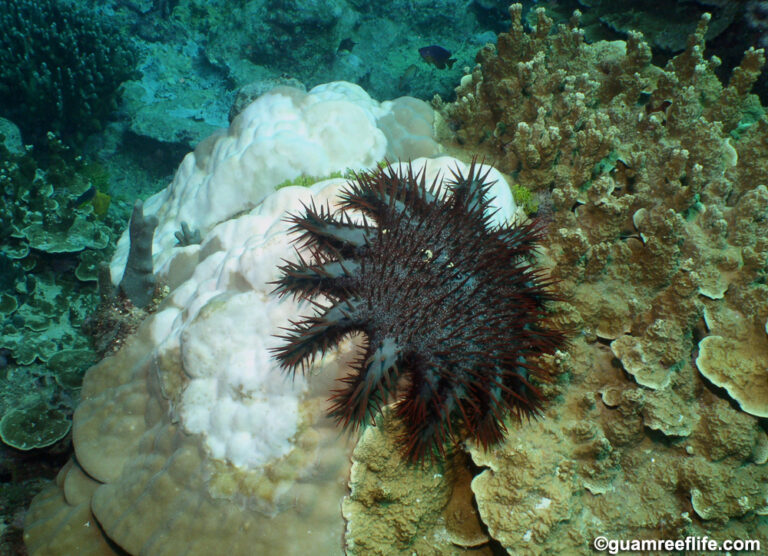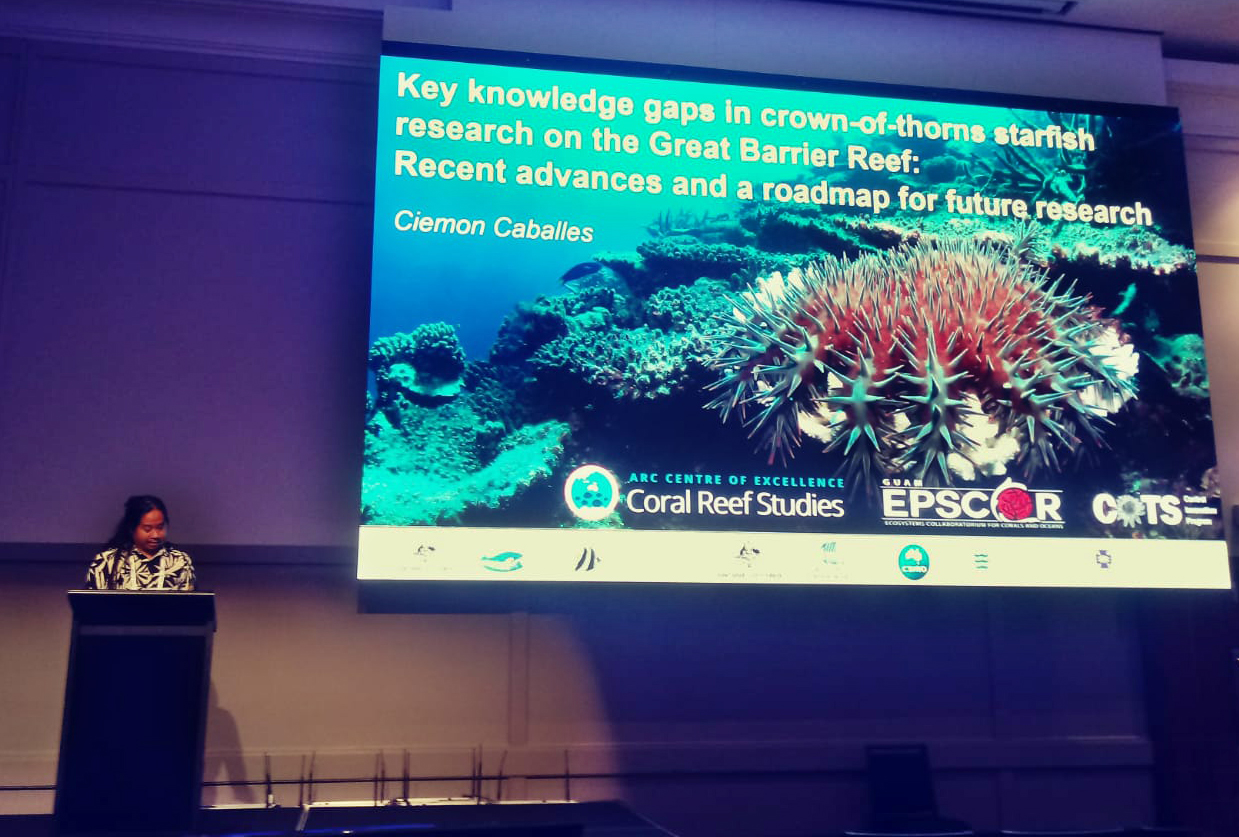



In April 2025, the University of Guam welcomed visiting researchers as part of an ongoing collaboration on the development of a new research instrument that can be used to assess the bleaching risk of different types of coral.
The instrument, called a chlorophyll fluorometer, is a non-destructive and non-invasive tool that uses different colors of light to measure the photochemical response of symbiotic algae within reef building coral.
During the visit, researchers Mark Warner, Ph.D., professor of marine science and policy at the University of Delaware, and Sophie Wong, a graduate researcher at the University of Alabama, were able to use the fluorometer to test the thermal stress response of different species within Guam’s waters. The researchers aimed to use the instrument on coral that have lived through previous bleaching events to observe which species may be more tolerant to conditions that lead to bleaching.
“We can actually measure really fine scale differences in the symbiotic algae inside of the reef building corals,” said Warner. “A lot of the times heat stress causes the algae to stress out first.”
According to Warner, use of the fluorometer can make it possible to observe thermal stress before symptoms of bleaching appear on the coral visually, allowing researchers to get ahead of coral reef management. Additionally, the instrument will help to observe characteristics of coral physiology which may indicate species that are more resilient to severe environmental conditions.
“This is meant to make trait-based restoration more accessible,” said Wong who works alongside the project’s lead principal investigator Kenneth Hoadley, Ph.D., who has been developing this instrument over several years. “So basically, identifying which corals are going to be more thermally tolerant based on the traits that they have. This basically measures those traits and is able to tell you, oh, this one has a trait that would be more conducible to surviving a bleaching event.”
“The hope is to use this to then identify those corals that are more resilient to increasing sea surface temperatures, to heat stress,” said Guam NSF EPSCoR’s Bastian Bentlage, Ph.D., who is one of the project’s co-principal investigators.
The use of the fluorometer is a ground-breaking method of gathering this type of data on the coral, which would otherwise require physically extracting tissue and DNA out of the algae within the coral — a much more intensive process.
As part of the research, this bio-optical instrument has also been tested in Fiji. Warner notes that a collaboration in Guam has many benefits, including being able to sample coral species that are unique to Guam, as well as species they were not able to access in Fiji.
“The University of Guam Marine Lab has been just really fantastic. They’ve facilitated a lot of things,” commented Warner, noting that the coordination of the University Marine Lab allowed their field work to run smoothly. “And so, I think it’s going to be a really fun collaboration moving forward.”
As the project progresses, the researchers will continue to test the instrument on a variety of coral species as well as run coral bleaching simulation tests. New prototypes of the instrument will also continue to be developed as a means to ensure that the technology is accessible to researchers world-wide who are dedicated to the management and restoration of these invaluable coral reefs.
This research project, funded by the Coral Research and Development Accelerator Platform, is being conducted in collaboration with coral researchers Hoadley of the University of Alabama; Warner of the University of Delaware; Bentlage and Laurie Raymundo, Ph.D., of the University of Guam; and Victor Bonito, Ph.D., of the nonprofit organization Reef Explore Fiji.



















